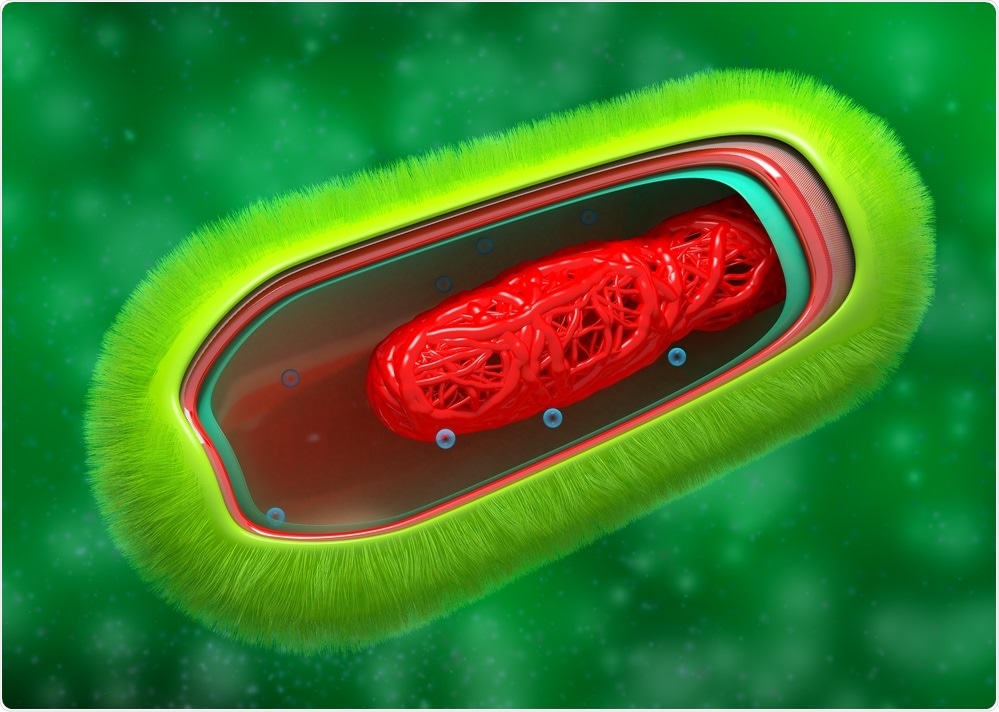Researchers have discovered a weak spot in the cell wall of pathogenic bacteria that could lead to the development of new antibiotics. This was a joint collaboration between researchers at the Hokkaido University of Japan, Duke University in the US and The Catholic University of Korea.
The findings were recently published in the journal Nature Communications, where the researchers write: “Novel antibacterial agents are needed to address the emergence of global antibiotic resistance. MrAY is a promising candidate for antibiotic development because it is the target of five classes of naturally occurring nucleoside inhibitors with potent antibacterial activity.”
 Decade3d - anatomy online | Shutterstock
Decade3d - anatomy online | Shutterstock
MraY is an enzyme that is critical to the formation of the bacterial cell wall until now, had not been explored as a potential antibiotic target. There are five natural inhibitors that impede MraY’s functionality, but the molecular mechanisms by which they work have not yet been elucidated, making the utilization of these natural inhibitors to develop new antibiotics a challenge.
Co-author of the paper, Satoshi Ichikawa, of Hokkaido University’s Center of Research and Education on Drug Discovery, explained:
Drug-resistant bacterial infections have claimed the lives of millions of people worldwide. Because of the emergence of global antibiotic resistance, scientists are constantly searching for new antibacterial compounds.”
The research team analyzed the crystal structures of three different types of nucleoside inhibitors that target MraY using X-ray crystallography. These included liposidomycin/caprazamycin, capuramycin, and mureidomycin, which all have distinct chemical structures and inhibit MraY in a different way.
X-ray crystallography reveals the molecular structures of crystals. By seeing these molecular structures, the researchers were able to investigate how MraY inhibitors bind to the enzyme and how they interacted with it.
Identifying a weakness
Spots on the surface of the MraY enzyme that had previously not been identified were revealed, and researchers found that it was these spots that inhibitors bound to. Each inhibitor bound to one specific region on MraY’s surface called the uridine binding pocket.
Although they were found to bind to the region in similar ways, they also interacted with two other sites to which they would bind. The paper explains the significance of this discovery:
Our structures reveal cryptic druggable hot spots in the shallow inhibitor binding site of MraY that were not previously appreciated. Structural analyses of nucleoside inhibitor binding provide insights into the chemical logic of MraY inhibition, which can guide novel approaches to MraY-targeted antibiotic design.”
This work could spark the progression of new antibiotic development, with drugs designed to act in the same way as these three inhibitors.
The researchers wrote that the MraY structures “bound to naturally occurring nucleoside inhibitors provide insights into the druggability of the shallow, solvent-exposed binding site on the cytoplasmic surface of MraY,” adding that drug development had struggled with targeting surface binding sites.
Opening up the potential for new antibiotics
While uridine cannot inhibit MraY activity itself, inhibiting MraY can be achieved by targeting hot spots found on the cytosolic surface near to where the uridine binding sites are found, as the paper explains.
It is the pocket adjacent to the uridine binding site, HS1, that is believed to be the most druggable site on the MraY enzyme, and it can recognize a large range of molecular structures responsible for biological and pharmacological interactions.
Our work can guide new approaches to MraY-targeted antibiotic design. By using this knowledge of how the compounds bind to and interact with MraY, it would be possible to design an MraY inhibitor that targets a novel combination of binding sites, with improved pharmacological properties and therapeutic potential.”
Satoshi Ichikawa, Co-author
Journal reference:
Mashalidis, E. H., et al. (2019). Chemical logic of MraY inhibition by antibacterial nucleoside natural products. Nature Communications. https://www.nature.com/articles/s41467-019-10957-9